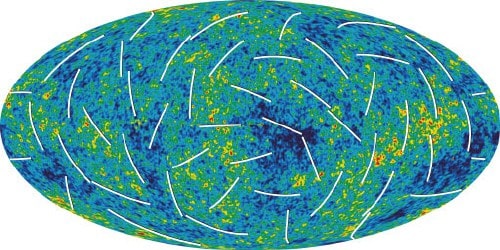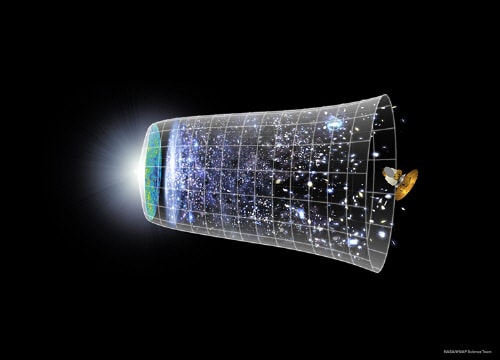After months of painstaking analysis, the Wilkinson Microwave Anisotropy Probe (WMAP) team has released its latest view of the radiation left over from the Big Bang. The results provide the first ever map of the polarization of the cosmic microwave background, revealing the universe when it was just 10-35 seconds old and putting the standard cosmological model through its toughest test to date.

The cosmic microwave background was born about 380,000 years after the Big Bang, when the universe cooled enough to allow the first atoms to form. Photons could suddenly travel unhindered through space, their wavelengths being stretched by the expansion of the universe to leave a haze of microwave radiation in every direction we look.
The first year of WMAP data, released in February 2003, revealed the temperature of this background radiation in exquisite detail. Crucially, it enabled researchers to measure tiny temperature fluctuations thought to have been produced by the same irregularities in space that led to the formation of galaxies.
Now, with three times more data, the WMAP team has measured the incredibly weak polarization signal of the photons, allowing cosmologists to infer how much the fluctuations are due to the distorting effects of matter and how much they are due to gravity waves in the infant universe. These measurements place strong constraints on models of inflation, a period that began 10-35 seconds after the Big Bang during which the universe is thought to have undergone an enormous expansion. Furthermore, since the polarization of the photons would have been affected by the presence of ionizing material, the latest data show that the first stars formed when the universe was 400 million years old — and not 200 million years as was previously thought.
The keenly awaited results, which were announced at a press conference at Princeton University yesterday, also confirm that we live in a flat universe comprising just 4% ordinary matter, 22% dark matter and 74% dark energy — in agreement with the standard model of cosmology.
“This is brand new territory,” says WMAP team member Lyman Page. “We are quantifying the cosmos in a different way to open up a new window for understanding the universe in its earliest times.”




